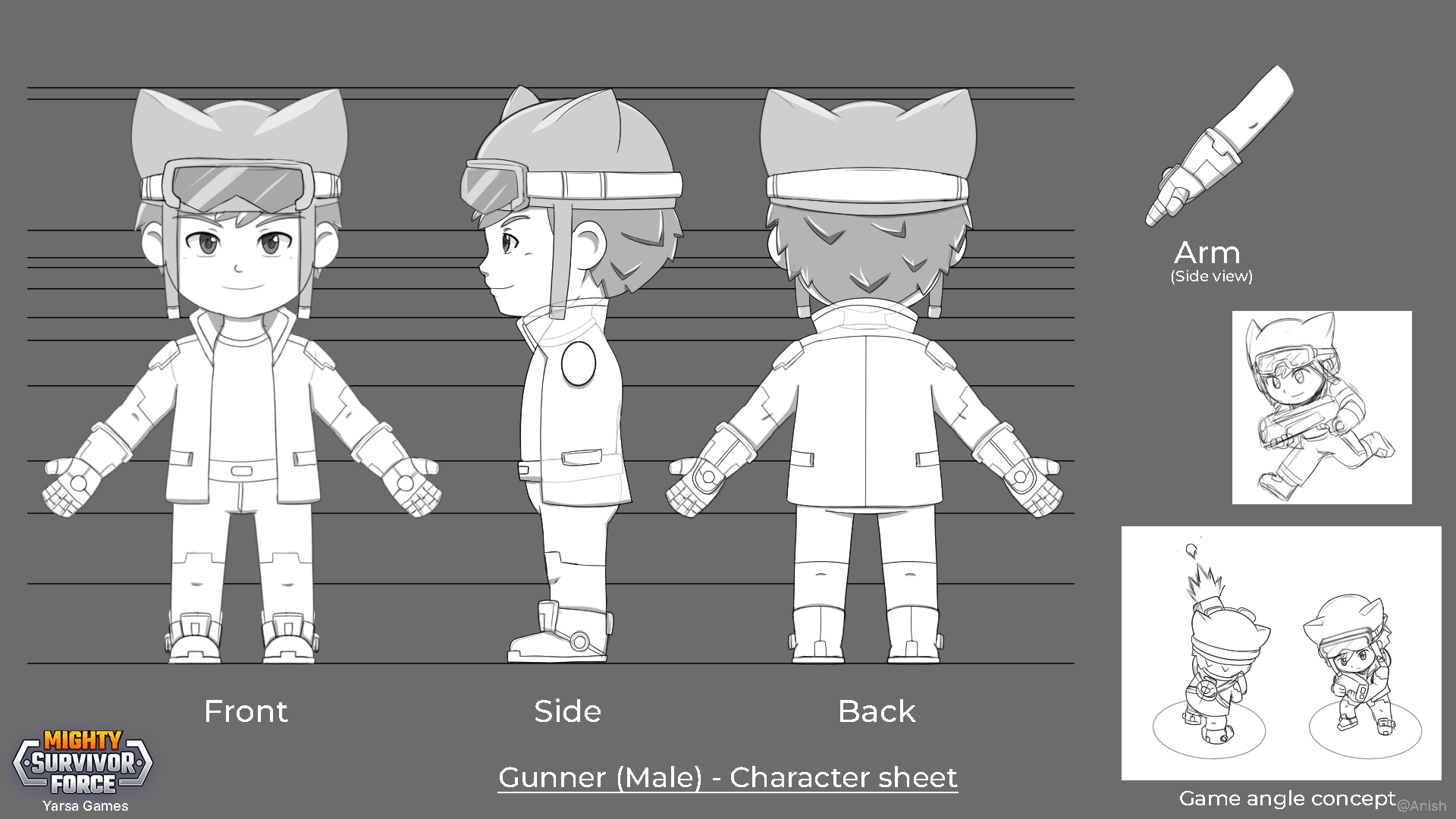In the preceding blog, I explained the first steps and some basic principles of character design for games. With all that research and concepts done, we will now move on to the actual steps of drawing the character, picking the colours, and creating the character sheet for animation.
Concepts and Poses
For Mighty Survivor Force, we had finalized that the main character that the player will play as first will be a male gunner. I had sketched various designs for him. I also tested their silhouettes and the one with the hat was the one which was the most unique among them.
Your first design does not always have to be the final one. You can keep exploring various visual directions and try minor iterations, like adding or moving around accessories. You do not have to think about colour at this stage.

Once you’ve created some character concepts, pick one or two and start drawing them in different poses.
This will help to communicate the character's personality. You can focus more on the gestures at first instead of the details of the character. Draw poses the character would mostly use in the game. These will also help the 3D modeller and animator in the future. A bubbly character full of energy will have large movements where they will move their arms far away from their body. A serious and reserved character will have small movements and might not swing their body around as much as the previous one.
Also, keep in mind the camera angle of the game. Since our game was a top-down shooter, I sketched the character at the same angle to see whether the design would look good and be identifiable. After the final design is approved, you can start picking the colours for the characters. You may have already tried some colours while making the concept, but it's time to pick the final colours.

We chose the colour red because of a few reasons. Red usually denotes power, courage, strength and bravery. The powers in the game are mostly blue and purple, so red would be more contrasting.
Character Sheets/Turnarounds
Character sheets or turnarounds are 360-degree views of the character, representing the front, back, and side views to visualize how they will look from different angles. This will help you create more poses with consistent design and help the 3D modeller make a 3D model by placing this sheet as their reference.
While drawing the character sheet, use rulers and guides to create the different angles. The guidelines can be placed on the head, eyes, nose, belt and other body landmarks. When making this sheet, you do not have to think about the character’s personality and pose. Simply draw the character in a straight standing position with their hands beside them.
You can draw them in a T-pose, where the hands are raised perpendicular to the rest of their body, or in an A-pose, where the hands are only raised slightly (see the image below, for example). After you’ve made the character's front view, you can follow these lines to create the side view.

If you’re using digital software, you can make the next steps easier. Duplicate the front view, decrease the opacity and cut the drawing in half. You can draw the side view on top of this on another layer. Similarly, for the back view, duplicate the front view, flip it, delete the details inside the body, and draw the details that will be on the back of the character.
You do not need to make the hands in the side view. This will just be an obstruction, and this angle of the hands will not be useful for the modelling process. You can draw the hands separately in the side view showing the palm's top or back to guide the modeler about how the hands will look.
After you've made the character sheet and concepts, drawing the character in different poses for splash screen illustrations and other illustrations will be easier. This will also help other artists draw the character for other illustrations.
Creating characters for mobile games is a bit tricky. Understanding the audience, prioritizing visual clarity, and readability will help you to create good character designs. Ensure your characters are easily recognizable and distinguishable, even on small screens. Overly complex designs might look cool on big-screen monitors, but they will feel overwhelming and busy on mobile screens.
I have described the basic thought and work process for designing a game character for mobile games. For writing the story for these characters, you can check out the Character for Video Games series by Jyohomson Dawadi.
Thank you so much reading this series. Hope you will be able to create game characters with the help of this article.
